A Magical Quest - Part Two
The Great Southern Brood
Sound alone was all I encountered on the trail — a song woven into the darkness of a pine forest. Sound, then shadow, met me as I stood at what felt like a boundary between worlds, in the gap between curtains constructed of trees, separating a dark forest from a lively campground still bright with early evening’s golden light. That world’s song was chatter and laughter, rising into the gilded air like shimmering bubbles of warmth and fellowship, mingling with the smoky campfire and barbecue smells that floated in slowly spiralling plumes. I stepped out of that world and into the smell of earth and the sweet fragrance of pines, sheltered by a ceiling of interlaced pine boughs, serenaded by the steady, single-note song of Magicicada tredecim, the 13-year decim periodical cicada. They sounded like a choir of thousands of mezzosopranos, if those singers stood far away, and if the white noise of wind and static rippled and crackled between us. These singers, though, were nearby — unseen, up high, somewhere in the trees.
This was how I first met Brood XIX, the Great Southern Brood, which emerges every thirteen years over a vast portion of the Southeastern and Midwestern United States. In 2024, both Brood XIX and Brood XIII (the Northern Illinois Brood of seventeen-year-cicadas) emerged together for the first time since 1803, making headlines and inspiring “reunion tour” concert-style T-shirts. After my brief encounter with Brood X in 2021, I had looked forward to 2024, though only Brood XIX would emerge in Georgia.
After nearly three years of waiting and several weeks of monitoring social media, a few iNaturalist observations led me to the trail behind the Trading Post at the FDR State Park Campground. Pale brown exuviae — nearly transparent, hollow molds of the nymphs they once had been part of — rested on the leaves of shrubs and clung to the plated bark of loblolly pines. I searched the forest’s shadows for a live cicada as the unseen choir sang, their voices forming the foundation for the rest of the forest’s music. It supported the clear, sweet voice of a red-eyed vireo singing its repetitive pairs of three-note phrases. Occasionally, corvids would join with a brief, brassy call.
Under a fuzzy green leaf, I finally found a black-and-orange insect, but it was not a Magicicada. It was Pyromorpha dimidiata, orange-patched smoky moth, small and bright, with rounded edges to wings that taper at the base; the paired wings form a narrow heart. The marigold splash near each wing’s base is all that reveals the moth in forest shadow, but when sunlight reaches the scales of their wings, they shimmer faintly.
As I returned to the trailhead, catching wisps of cooking smoke and a murmur of camper’s conversation, I spotted something clinging to the soft, skinny branch of an oak sapling. With orange veining translucent wings, striping the insect’s abdomen, and interrupting the otherwise wholly black thorax as a patch behind each red eye — it was a male Magicicada tredecim.
The next day found me again seeking cicadas. I wanted to see more than a single live cicada. I wanted to find and document all three Brood XIX species present in Georgia. I wanted to see the infamous swarms of dozens or even hundreds of flying cicadas. I wanted to see the nymphs emerge from the earth and their final molt, the pale teneral cicadas waiting to dry and strengthen before their ascent to scream and mate from the treetops.
As I rolled down my driver’s side window to show the park attendant my pass, song rushed toward me from the forest of Mistletoe State Park — a choir of Magicicada tredecim. Perhaps here I would find the cicada swarm I sought.
Slowly, I traveled one of the park’s wooded trails, scanning for cicadas. Again, I found the shed exuviae of molted Magicicada. Again, I even found an orange-patched smoky moth on the underside of an oak leaf. Soon, I found my first adult cicada. The cicada climbed up the trunk of a loblolly pine, unhindered by one crumpled, malformed wing. I carefully plucked the cicada off the tree to take a photo of the abdomen. Orange stripes stretched across the entire abdomen, telling me that this was M. tredecim. I placed the cicada back on the trunk of the tree, higher up than I had found her, to make up for interrupting her ascent. Then I took a small bottle of hand sanitizer out of my backpack and applied it to my hands. I had a vague understanding of a disease affecting this year’s cicadas, and while I had no idea if my hands could spread the disease from cicada to cicada, I wanted to minimize risk.
That disease was Massospora cicadina, a fungus that, in her excellent book The Cicadas of North America, Chris Alice Kratzer describes as follows: “Imagine a sexually transmitted disease that makes your whole butt fall off.”1
I would soon encounter this phenomenon — cicadas making their way up trees and across leaf litter with their entire abdomen missing.
Massospora cicadina attacks the abdomens of their hosts, soon replacing it with a mass of white spores. At the same time, the fungus releases chemicals that encourage the host to mate with other adults, spreading the disease. Infected adults also spread spores onto the ground, where they infect nymphs as they emerge for their final molt.
Though I didn’t exactly want to see an infected cicada — a sad, doomed creature of a species I was growing to love — deep down, I hoped to document at least one iNaturalist-verifiable Massospora infection for my life list.
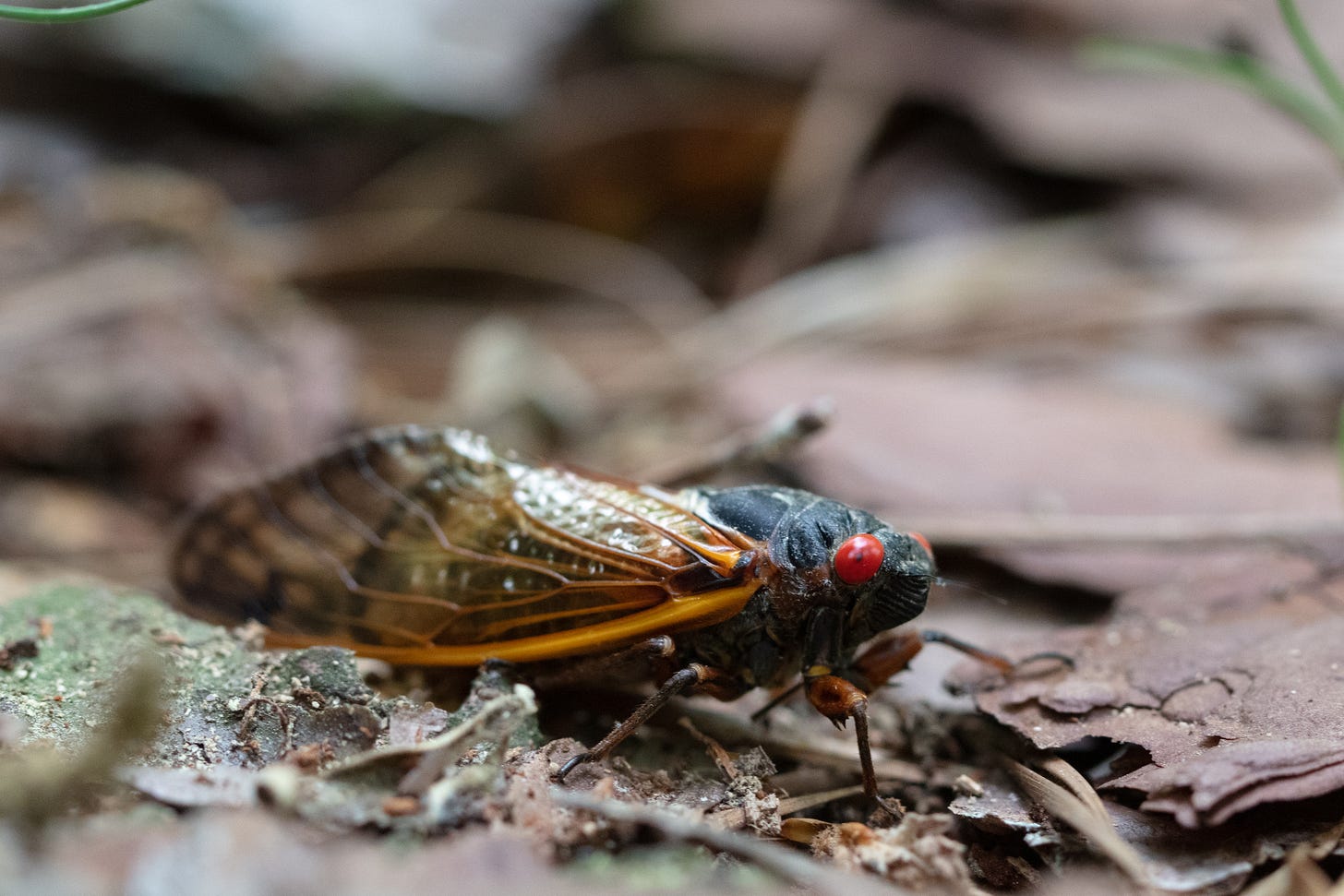
The wooded trail soon turned towards a soggy, wetland area before running along a creek. Here, I paused, detecting something different about the cicada song. Mixed in with the siren-like voice of M. tredecim, I picked up mechanical buzzing and clicking. I made a recording to study later.
Towards the end of my journey, I encountered the other object of my quest — a rare tree.2 Stewartia malacodendron appeared first as a pearly glow in the darkness of woodland slope. Soft hairs coated each of the tree’s leaves — the reason the tree is called “silky camellia.” When this downy layer caught what scant sunlight passed through the dense canopy overhead, the entire tree seemed to glow a pale silver. As I drew closer, the tree was a cascade of bloom-bedecked branches curving parallel to the sloping hill. Each luminous blossom and large, round bud was like a small full moon. Drawing closer still, I saw the stamens, like fireworks of deep plum purple radiating from the center of each flower.
The trip had been a success. I went in search of cicadas and Stewartia and found both. Back at home, an iNaturalist comment on the recording I’d uploaded informed me that I had indeed captured the buzzing, clicking song of M. tredecassini, Southern black periodical cicada. Further, I had recorded a third song, a slow rattle, like maracas. It was M. tredecula, Southern barred periodical cicada. The commenter wrote that it was a “great three-species chorus example.” Wow! In one weekend, I had found what I was looking for — silky camellia and all three species of thirteen-year cicada,3 all documented sufficient to achieve iNaturalist’s Research Grade.
My time with Brood XIX was not yet over, however. Brood XIX kept giving. I kept finding it, often unexpected, on my springtime quests and adventures that year. More than two weeks later, at the Adairsville I-75 Northbound rest area, something golden flitted across the road leading to the upper parking lot. “Is that a butterfly?” I thought, perplexed. As I ascended, more and more golden flutters came into view — plump bodies with shimmering wings, like chubby fairies. That was when it clicked — Magicicada! I had come across another emergence of Brood XIX! I parked in the upper lot, grabbed my camera, and exited the car, elated.
Here was the swarm, the massive flight of cicadas I’d heard about. Their song nearly drowned out the roar of trucks on the interstate. Buzzing and clicks dominated, though the siren song of M. tredecim rang faintly in the background.
I hadn’t planned to spend half an hour at a rest area. I planned to spend my afternoon exploring the cedar glades of Chickamauga Battlefield Park. But the cicadas enchanted me. I sat at a picnic table — the only traveler who spent more time outside of my car than a brisk walk to and from the restrooms — eating a sandwich with a smile and about half a dozen cicadas as companions. They crawled across the concrete table; they flew around my head; they landed on my arms and hooked their tiny claws into my T-shirt sleeves. Before leaving the rest area, I circled a patch of crape myrtle and Bradford pear trees, photographing dozens of cicadas as they climbed, crawled, and crowded the trunks, branches, and leaf litter.
Most of the cicadas I photographed lacked an orange patch behind each eye and, even without picking them up and flipping them, I could see that their abdomens were solid black. I had now seen, for the first time, Magicicada tredecassini, after only hearing them in late April.
Twelve days later, I returned to that rest area (once again on my way to Chickamauga Battlefield.) Lying on the ground, I found a dead cicada with an orange-striped abdomen, though the stripes did not fully stretch across the abdomen. This was M. tredecula, identifiable by its lack of orange thorax patch and orange stripes that only cover the sterna (the lower plates of the abdomen) and not the terga (the upper plates). Further, part of the cicada’s abdomen was a mushroom-y mass of white — Massospora cicadina. Now I had truly crossed everything off my “Brood XIX To Find” list — visual and sound identification of all three species and even Massospora.
About a month later, on June 21st, the first Friday of summer, I stood on a stone in a creek that crossed one of the dirt roads at Piedmont National Wildlife Refuge in Middle Georgia. I was there to count butterflies, but at that moment, I held the corpse of a thirteen-year cicada. Exuviae and dead or dying cicadas lay on the ground. This was the last I would see of Brood XIX. I remarked, “I will be fifty-three when I see thirteen-year cicadas again.” That didn’t seem so long. But I would not have to wait very long for my next magical, Magicicada quest. As the creek flowed around me and I mourned Brood XIX, I also looked ahead to 2025, to the emergence of the Appalachian Brood (Brood XIV) in the northeast corner of Georgia. In less than a year, I would travel to the mountains in search of the Mother of All Broods of Magicicada.
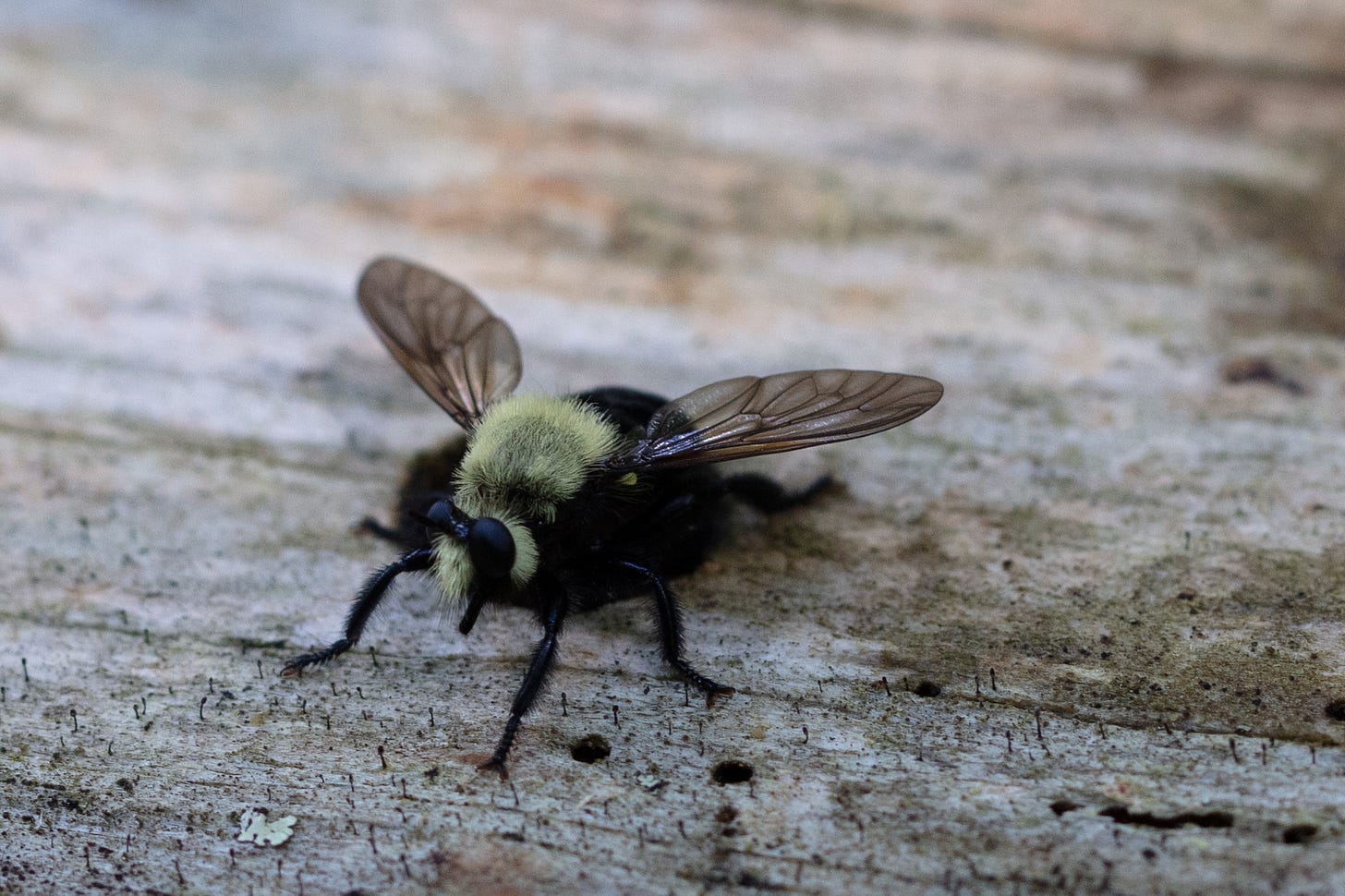
References and Acknowledgements
Thank you to iNaturalist users anthony296 (Anthony A. Simmons) and weecorbie (Jessee J. Smith) for their help in my Brood XIX quests last year, and once again to Chris Alice Kratzer for her beautifully written and illustrated book The Cicadas of North America.
Kratzer, Chris Alice. The Cicadas of North America (Frenchtown: Owfly Publishing, 2024), 20.
While I avoid sharing rare plant locations, just the name of a park is imprecise. I also assume that poaching an entire tree would be difficult and unlikely.
M. neotredecim, Missouri pharaoh periodical cicada, has a limited, Midwestern range that does not include Georgia.

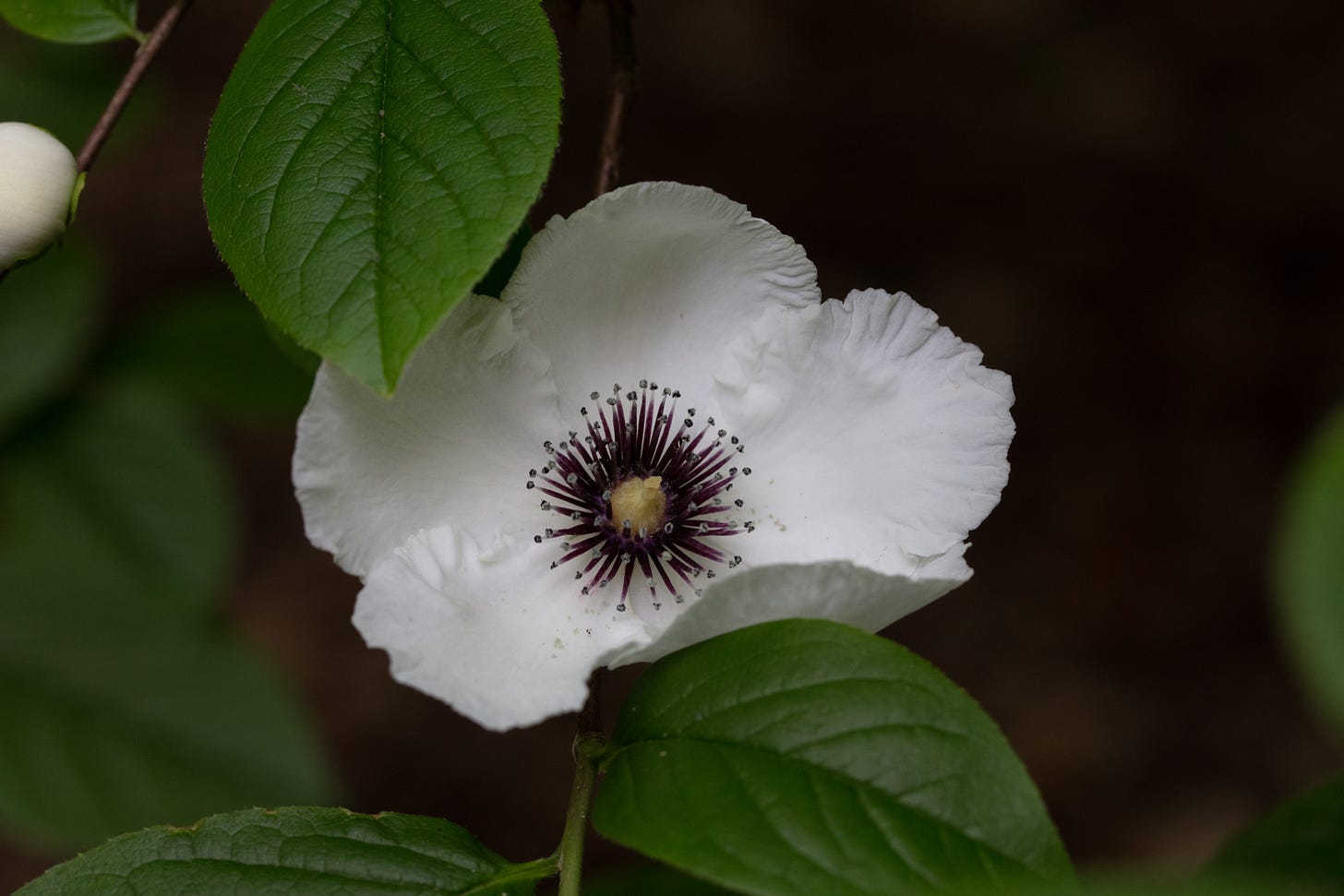
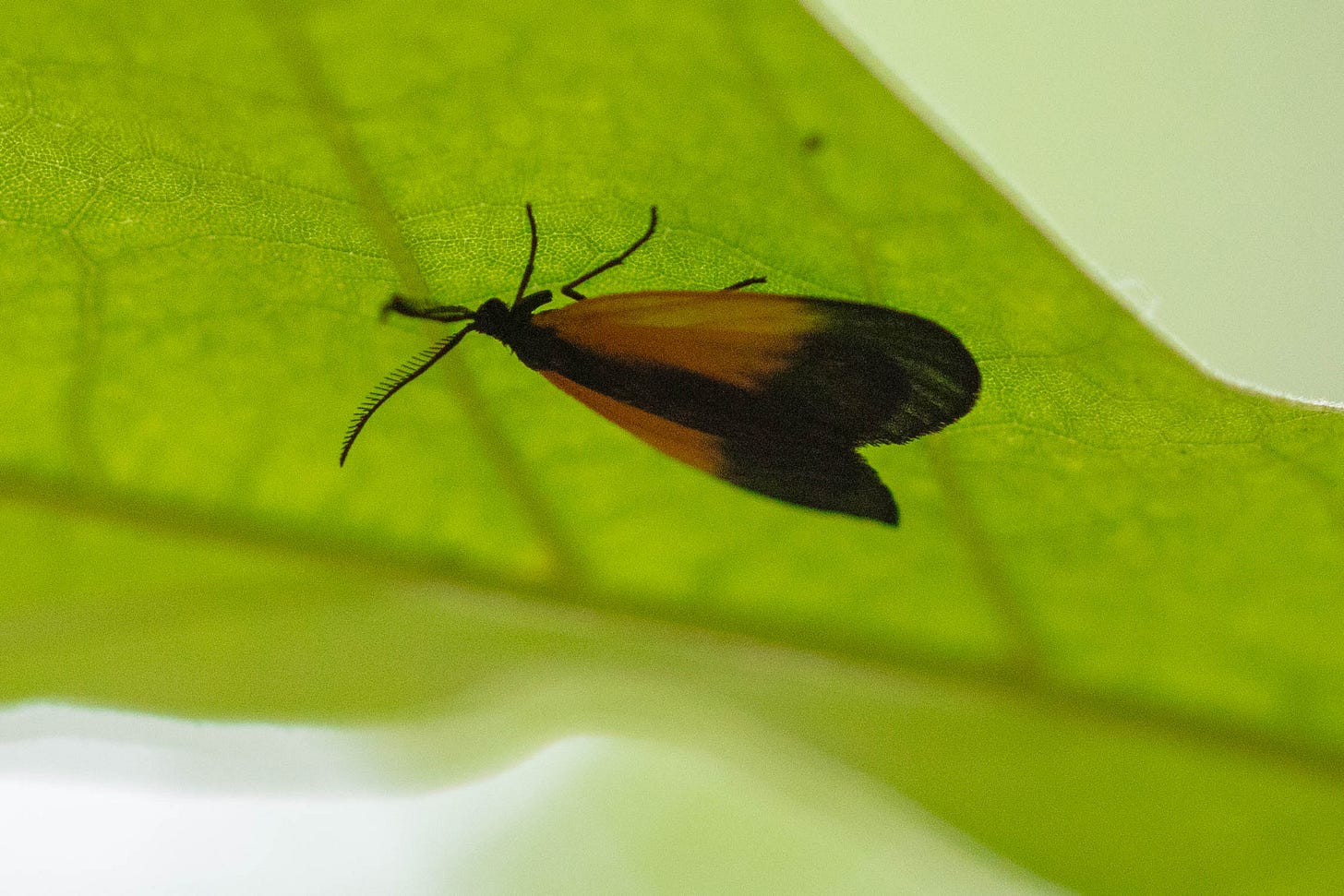
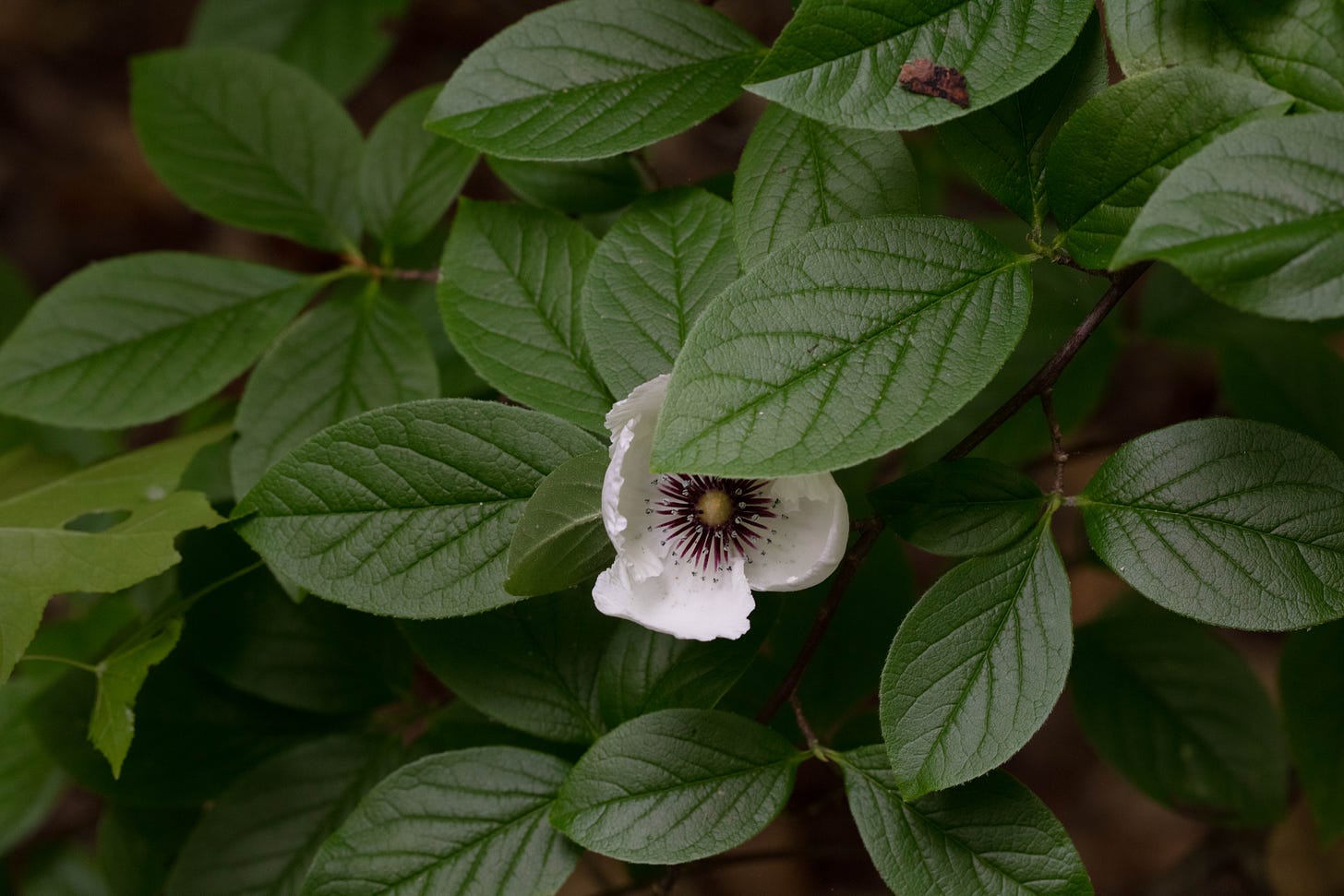
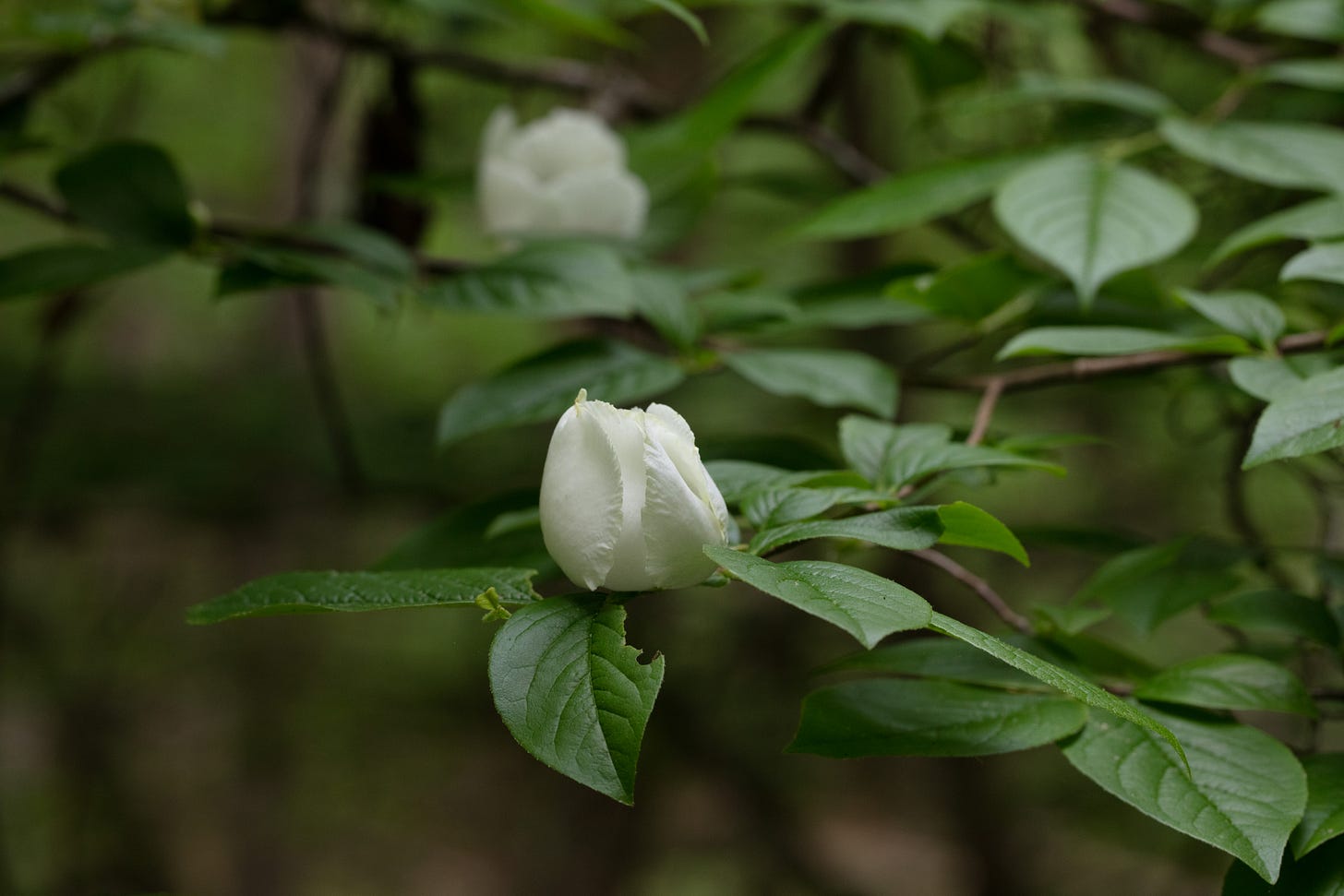
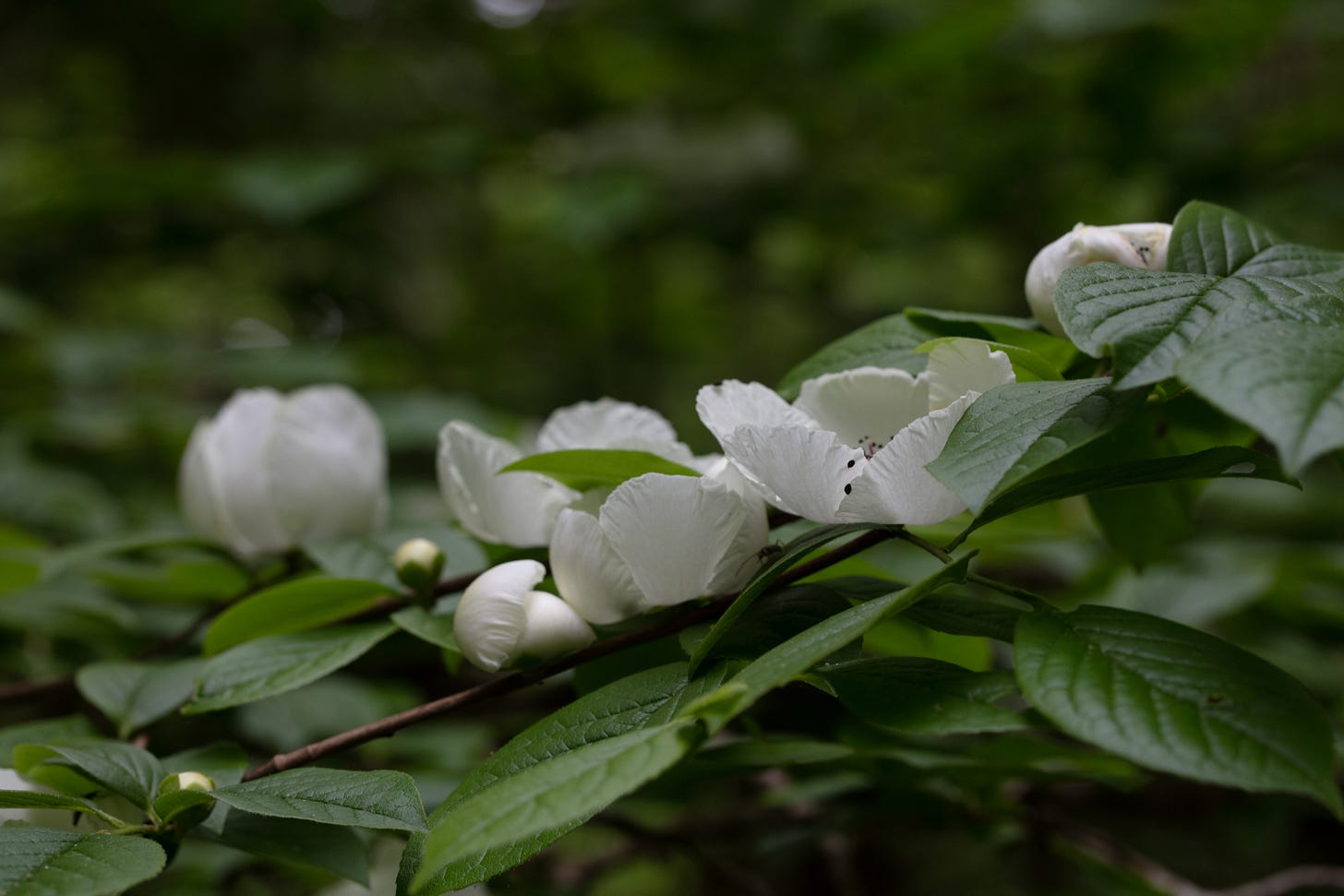
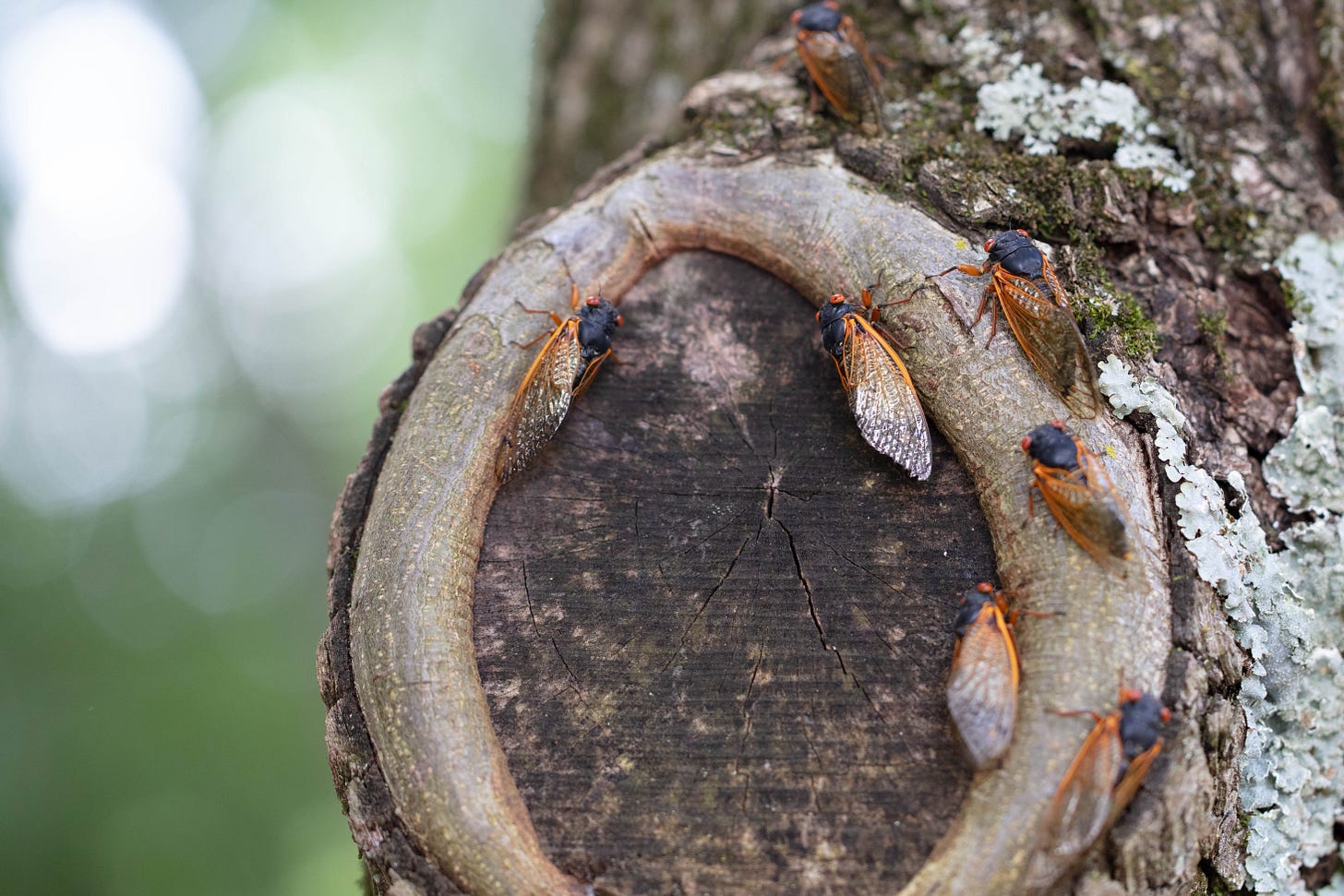
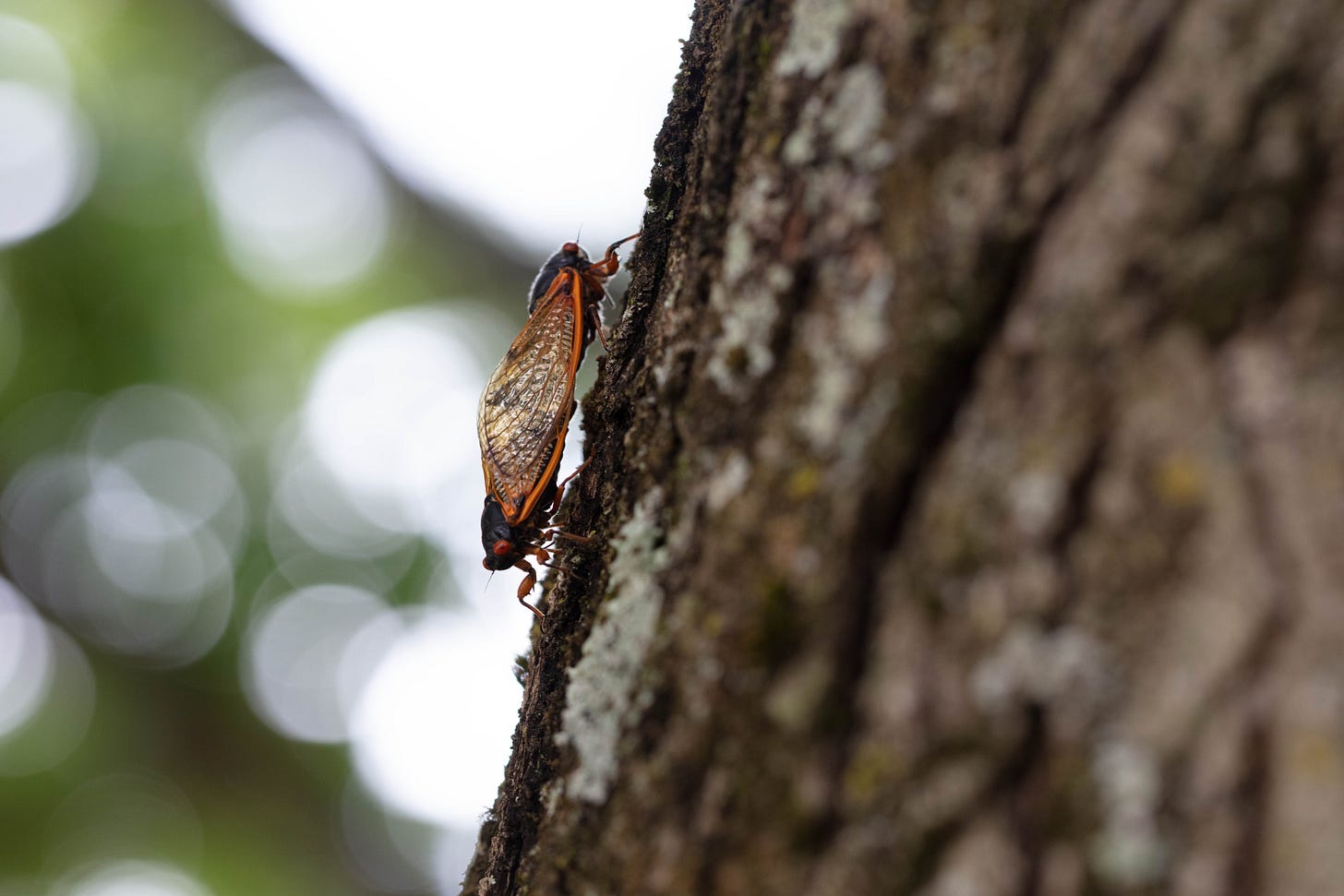
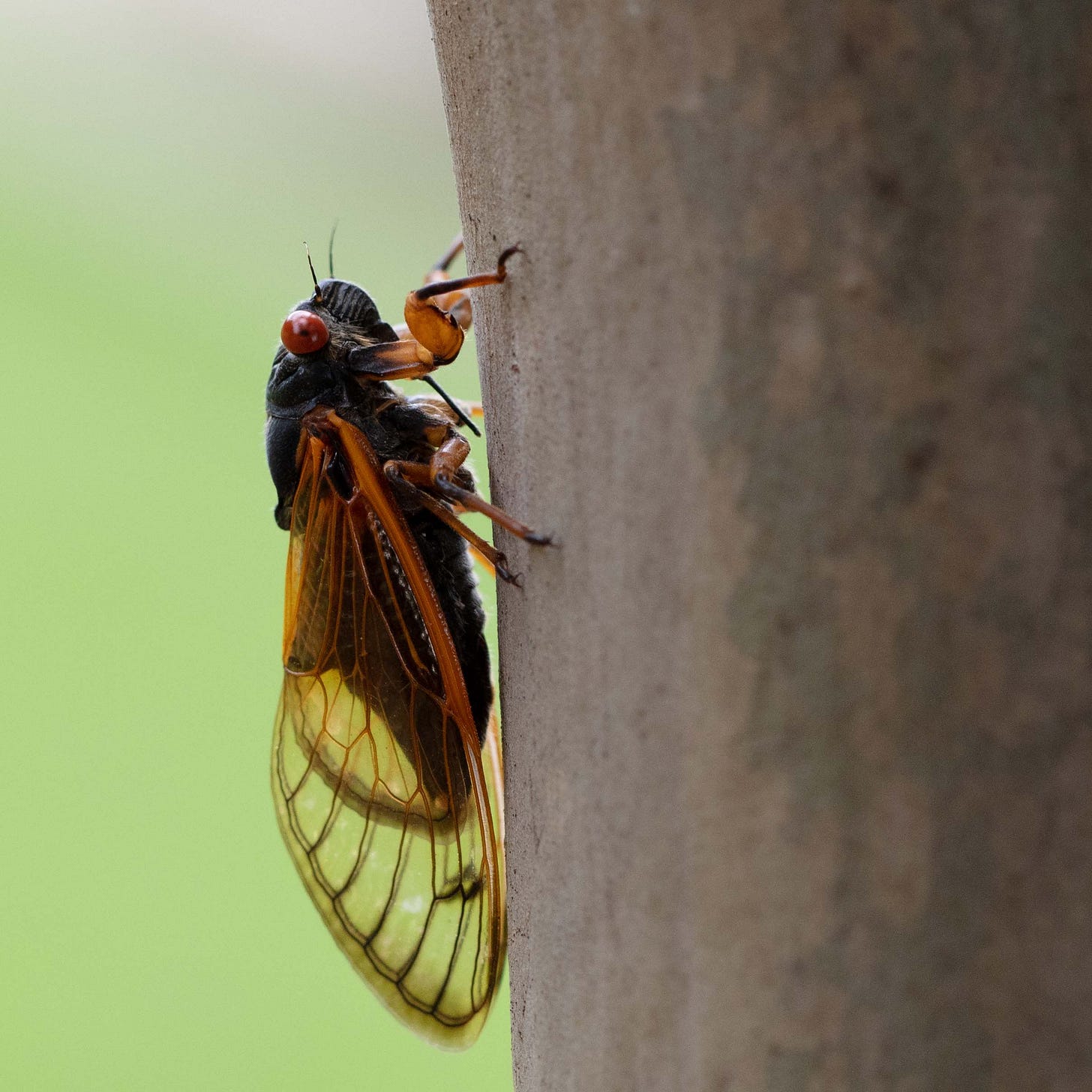
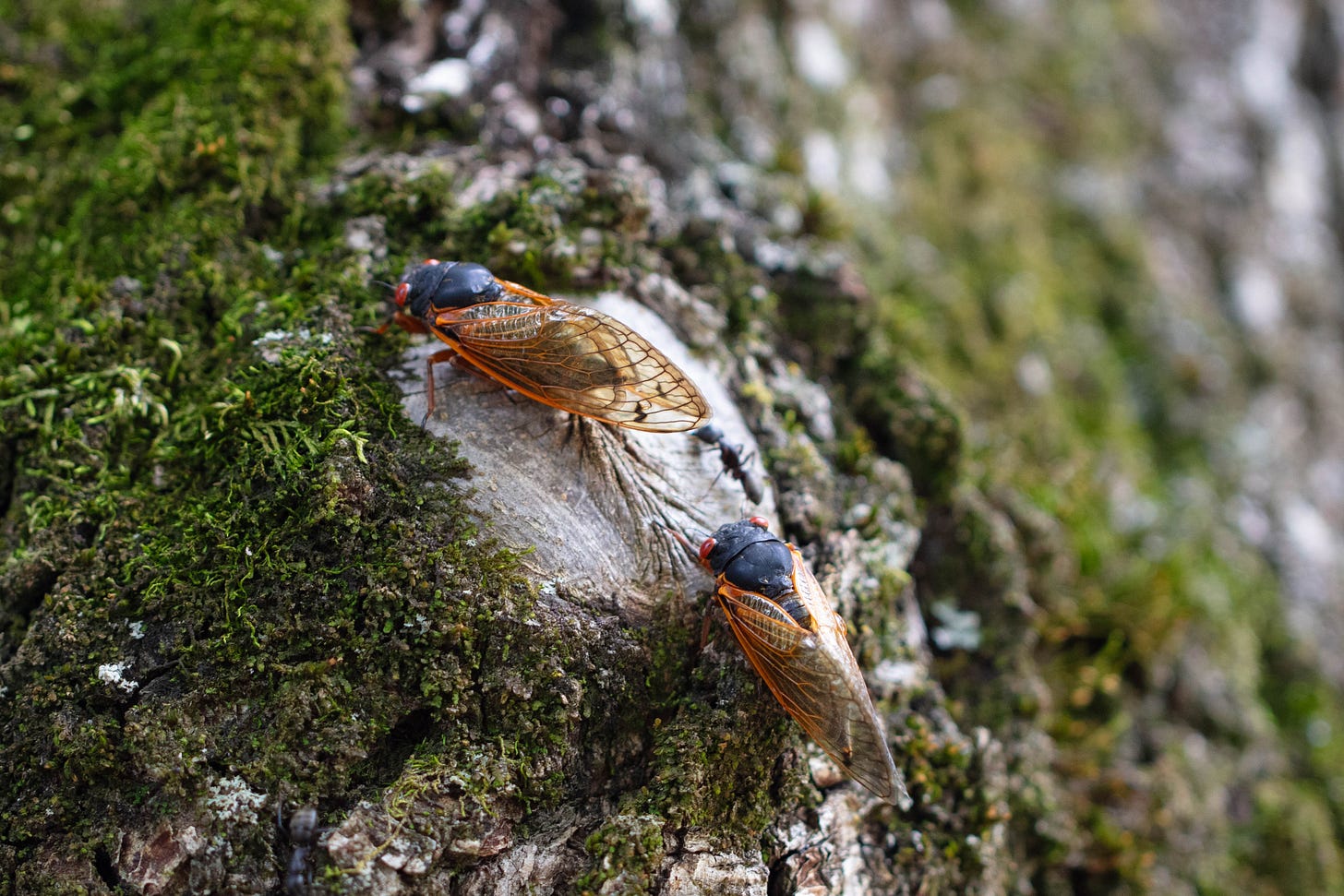

I learn so much from your posts, they inspire me to get out and explore the world around me that is still so unfamiliar to me.
“Sound, then shadow, met me as I stood at what felt like a boundary between worlds…” I love this, and learning from your essay about Cicadas. So beautifully written.
Only thirteen years to wait for the next brood and Part Three of “A Magical Quest”. Thank you.